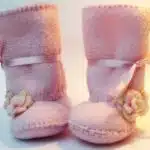As a footwear and shoe care expert, I am often asked when is the right time to get rid of old shoes. Many people hold on to their shoes for far too long, even when they are clearly past their prime. Wearing worn-out shoes not only looks unprofessional but can also lead to foot problems such as blisters, calluses, and even serious injuries. In this article, we will explore the signs that indicate it’s time to part ways with your beloved footwear.
Shoe replacement is an important aspect of maintaining good foot health and preventing injuries. Unfortunately, many individuals do not realize that their shoes have reached the end of their life span until it’s too late. The lifespan of a shoe depends on several factors such as the quality of materials used, frequency of use, and type of activity performed while wearing them. Therefore, it is crucial to know when to replace your shoes in order to avoid discomfort or potential injury from prolonged use of old or worn-out footwear. In the following paragraphs, we will discuss some telltale signs that indicate it’s time for you to get rid of your shoes and invest in a new pair for better foot health and comfort.
The Importance Of Shoe Replacement
As a footwear and shoe care expert, I cannot stress enough the importance of shoe maintenance. Shoes are not only a fashion accessory but also serve as protective gear for our feet. They take the brunt of our daily activities, whether it be running errands or going on long walks. Therefore, we must take good care of them to ensure they last longer.
One common misconception about shoe lifespan is that it solely depends on its physical appearance. People tend to replace their shoes only when they look worn out or dirty. However, this is not always an accurate indicator of when to get rid of your shoes. Factors such as the type of material used and how frequently you wear your shoes play a crucial role in determining their lifespan.
Another myth about shoe replacement is that expensive shoes last longer than cheaper ones. While high-quality materials may increase the longevity of shoes, it ultimately comes down to proper care and usage. Even the most expensive pair of shoes will not last if not taken care of adequately or used beyond its intended purpose. Therefore, investing in proper shoe maintenance can extend the life span of your footwear regardless of cost.
Understanding the importance and misconceptions surrounding shoe lifespan is crucial in making informed decisions about when to get rid of your shoes. In the next section, we will delve deeper into factors that affect the lifespan of shoes and how to make them last longer without compromising comfort or style.
Factors That Affect The Lifespan Of Shoes
Shoe durability is influenced by several factors. The first factor is the quality of materials used in the construction of the shoe. Shoes made from high-quality materials tend to last longer than those made from inferior materials. The second factor is the design and construction of the shoe. Shoes that are well-designed and properly constructed are less likely to fall apart than those that are poorly designed or constructed.
Impact of usage on lifespan is another crucial factor affecting durability. The more frequently you wear your shoes, the faster they will deteriorate. This is particularly true if you wear them for activities such as running or hiking, which put a lot of strain on the shoes’ soles and uppers. Additionally, exposure to harsh environmental conditions such as rain, mud, or extreme heat can also shorten a shoe’s lifespan.
Proper care and maintenance can help extend your shoes’ lifespan. Avoid wearing them for long periods without giving them time to air out properly; doing so can cause moisture buildup inside the shoe, leading to unpleasant odors and damage to the material. Regular cleaning and conditioning can also help keep your shoes in good condition for longer.
With these factors in mind, it’s important to keep an eye out for signs of wear and tear on your shoes. These include holes in the soles or uppers, worn-down treads, loose stitching, and cracks in the leather or other materials. If you notice any of these signs, it may be time to replace your shoes before they become too damaged to use safely or comfortably.
Signs Of Wear And Tear On Your Shoes
As a footwear and shoe care expert, I highly recommend keeping an eye out for any signs of wear and tear on your shoes. Preventing damage is always better than repairing shoes that are already damaged. This not only saves you money in the long run but also ensures that your shoes last longer.
To prevent damage, it’s important to take care of your shoes from the get-go. This means properly cleaning them after each use and storing them in a dry, cool place. Avoid exposing them to extreme heat or cold as this can cause the materials to break down faster. Additionally, using shoe trees or stuffing them with newspaper can help maintain their shape and prevent wrinkling.
When inspecting your shoes for signs of wear and tear, pay attention to the soles, stitching, and upper materials. Here are three things to look out for:
Worn out soles: If you notice that the soles have become thin or unevenly worn down, it’s time for a replacement.
Loose stitching: Loose stitching can lead to further damage if left unchecked. Have a professional repair it as soon as possible.
Cracks or holes in the upper material: These can be caused by excessive wear or exposure to moisture. Depending on the severity, they may need to be repaired or replaced altogether.
By taking preventative measures and regularly inspecting your shoes for signs of wear and tear, you can save yourself from costly repairs down the line. In the subsequent section, we’ll explore visible signs of damage in more detail and what steps you can take to address them.
Visible Signs Of Damage
Signs of wear and tear on shoes can be quite evident if you know what to look for. The heel area is the most prone to wear and tear, especially when walking on hard surfaces like concrete. When the heels start to slope inward or outward, it’s time to replace them. Another sign of wear is when the soles are worn out in certain areas.
Shoe maintenance is an essential part of ensuring your shoes last longer. It’s important to keep your shoes clean, especially if they’re made from leather or suede. Use a soft brush to remove dirt and dust, and a damp cloth for deeper cleaning. Conditioning your shoes regularly helps prevent drying and cracking.
If you notice visible signs of damage on your shoes, it’s best not to ignore them as they can worsen with time. Repair tips depend on the type of damage, but generally speaking, small tears or scratches can be mended with shoe glue or clear nail polish. However, more significant damage may require professional repair services.
As important as shoe maintenance and repair tips are, sometimes it’s necessary to get rid of your shoes altogether. Worn-out outsoles are one of the most common reasons people dispose of their footwear. When the soles have lost their grip or become too thin, it’s time for a new pair. Remember that keeping old shoes can be hazardous and uncomfortable in the long run, so don’t hesitate to replace them when necessary.
Worn-Out Outsoles
The outsole of a shoe is the part that comes in contact with the ground and provides traction. As such, it experiences a lot of wear and tear over time. When the outsole begins to wear down, it can lead to problems with stability and safety while walking. This is a sign that it may be time to get rid of your shoes.
Shoe repair may be an option for some people when dealing with worn-out outsoles. However, there are limitations to what can be done through shoe repair. In most cases, it is not possible to replace an outsole once it has become completely worn down. DIY shoe care can help prolong the life of your shoes but keep in mind that this method cannot fully restore them if they have already reached their limit.
If you notice uneven wear patterns on your shoe soles, this could also indicate that it is time to get rid of them. Uneven wear can occur due to issues with pronation or supination, which can cause one side of the sole to wear down more quickly than the other. While this issue can sometimes be corrected with orthotics or other interventions, it may also signal that the shoe has reached its maximum lifespan.
- Regularly inspect your shoes for signs of wear and tear.
- Consider investing in high-quality shoes that are designed for durability.
- Don’t wait too long before replacing your shoes once they begin to show signs of significant wear.
Next section: Uneven Wear Patterns…
Uneven Wear Patterns
Uneven Wear Patterns: A Sign of Neglect
Shoe maintenance is an essential aspect of footwear care. Like any other item that we use frequently, shoes also need to be taken care of properly. Proper shoe care not only enhances their lifespan but also improves their performance and comfortability. One of the most common problems with shoes is uneven wear patterns. This issue can significantly impact your walking gait and cause discomfort or even injuries.
Uneven wear patterns occur when certain parts of your shoes experience more pressure and friction than others. It can result from various factors such as walking style, body weight, and shoe design. However, it’s crucial to understand that these issues are preventable through proper shoe maintenance practices. Below is a table showcasing some common types of uneven wear patterns, their causes, and preventative measures:
| Type of Uneven Wear Pattern | Cause | Prevention |
|---|---|---|
| Heel Wear | Walking Style | Use heel cups or inserts |
| Toe Wear | Body Weight Distribution | Rotate shoes regularly |
| Sole Wear | Walking Surface Type | Avoid rough surfaces |
Proper care for your footwear involves more than just cleaning them regularly; it also means taking measures to prevent uneven wear patterns. By doing so, you can prolong the life of your shoes while maintaining maximum performance and comfortability levels.
Neglecting the types of uneven wear patterns discussed above can lead to further complications such as loss of support and cushioning in your footwear. If left unaddressed, this problem can exacerbate discomfort or even cause long-term damage to your feet or legs. In the next section, we will discuss how loss of support and cushioning affects the quality of your footwear and what you can do about it.
Loss Of Support And Cushioning
As shoes age and are used frequently, they begin to lose support and cushioning, leading to discomfort and even pain in the feet, legs, and back. This is why it is important to pay attention to the impact of usage frequency on your shoes. Over time, the materials that make up your shoes compress or break down, causing a loss of support. Shoes that are worn every day may need to be replaced more often than those that are only worn occasionally.
Proper maintenance can help prolong the life of your shoes and prevent loss of support and cushioning. Regular cleaning and conditioning will keep leather shoes supple and prevent cracks from forming in the material. In addition, replacing insoles periodically can provide extra cushioning for your feet. Properly storing your shoes when not in use can also help preserve their shape and prevent them from becoming misshapen or losing support.
Ignoring signs of wear in your shoes can lead to discomfort or even injury over time. If you start experiencing pain when wearing a particular pair of shoes, it may be time to replace them. It is important to remember that different types of shoes have varying levels of durability based on the materials they are made from and how they are constructed. By paying attention to usage frequency and properly maintaining your footwear, you can ensure that you get the most out of each pair.
Looking after your footwear is essential for ensuring maximum comfort while wearing them. However, proper maintenance alone cannot eliminate unpleasant odors caused by daily use or other factors such as excessive sweating or moisture buildup in the shoe’s interior. In the next section we will discuss how these unpleasant odors can be tackled effectively without having to compromise your favorite pair of kicks.
Unpleasant Odors
Removing odors from shoes is best accomplished by using a product specifically designed to eliminate odors, such as an odor-eliminating spray or powder.
To fight unpleasant odors, regular cleaning of shoes is essential to prevent the buildup of bacteria that can cause odors.
Proper shoe storage is also an important part of odor prevention. Shoes should be kept in a cool and dry place away from direct sunlight and heat.
Additionally, it is recommended to rotate between two or more pairs of shoes to prevent the buildup of odor-causing bacteria.
To further reduce odors, it is recommended to remove the insole and laces of shoes and wash them regularly.
Using an odor-absorbing powder or deodorizing insoles can also help reduce offensive odors from shoes.
Removing Odor
As a footwear and shoe care expert, I understand the importance of maintaining the hygiene of one’s shoes. An unpleasant odor emanating from your shoes may be an indication that it is time to get rid of them. However, before you dispose of your shoes, it is crucial to explore DIY remedies and professional services to remove the odor.
DIY remedies are cost-effective ways to eliminate odors from shoes. Baking soda and activated charcoal are two effective ingredients that can absorb moisture and neutralize odors. Sprinkling baking soda or placing activated charcoal in your shoes overnight can help eliminate the foul smell. Additionally, using essential oils like tea tree oil and lavender oil can also help deodorize your shoes.
If DIY remedies do not work, it may be time to seek professional services. Professional shoe cleaners have advanced tools and equipment to clean even the most stubborn stains and odors. They use specialized cleaning agents that penetrate deep into the fabric of your shoes, leaving them fresh and clean. Furthermore, professional cleaners can identify any underlying issues such as mold or mildew growth that could be causing the unpleasant odor.
In conclusion, removing odor from your shoes is essential for both personal hygiene and aesthetics. DIY remedies such as baking soda or activated charcoal can help eliminate simple odors while professional services are available for more challenging situations. As a footwear expert, I advise taking action when facing unpleasant odors as they could signify underlying health hazards such as fungal infections or bacterial growth within the shoe itself.
Fighting Smells
Unpleasant odors can be a significant problem for shoes, especially for those who wear them on a regular basis. Fighting smells is an essential aspect of shoe care that requires knowledge and expertise to ensure the longevity of your footwear. As a footwear and shoe care expert, I understand the importance of choosing natural remedies for odor control that are both effective and safe.
One way to fight smells naturally is to use essential oils, such as peppermint or eucalyptus oil. These oils have antimicrobial properties that can help eliminate bacteria and fungi that cause unpleasant odors. Another option is to use vinegar, which has been proven to be effective in neutralizing odors. Simply mix equal parts water and vinegar, then spray the solution inside your shoes before letting them dry in a well-ventilated area.
Aside from using natural remedies, it is also crucial to know how to properly clean and store your shoes. Cleaning your shoes regularly with mild soap and water can help prevent odor buildup. After cleaning, make sure to let your shoes air dry completely before storing them in a cool and dry place where they won’t be exposed to moisture or heat. Proper storage can help prevent mold growth, which is one of the common causes of unpleasant shoe odors.
In summary, fighting smells requires a combination of natural remedies and proper shoe care practices. Essential oils and vinegar are effective options for odor control while regular cleaning and storage can prevent odor buildup caused by bacteria or mold growth. As someone who values serving others through footwear expertise, I encourage everyone to prioritize shoe care as part of their personal hygiene routine.
Odor Prevention
As a footwear and shoe care expert, it is essential to address the issue of unpleasant odors in shoes as it affects not only the longevity of footwear but also personal hygiene. One effective way to prevent unpleasant odors is through the use of shoe deodorizers. Many types of shoe deodorizers are available in the market, ranging from sprays to pouches that can be inserted into shoes. It is important to choose a product that contains natural ingredients and has long-lasting effects.
Apart from commercial shoe deodorizers, there are also various DIY odor removal techniques that individuals can use to prevent unpleasant smells in their shoes. One popular method is using baking soda, which acts as a natural absorbent and neutralizes odors. Sprinkle baking soda inside your shoes and leave them overnight before shaking out the excess powder. Another option is to use activated charcoal, which has excellent odor-absorbing properties. Place a small amount of activated charcoal inside a cloth bag or pouch and insert it into your shoes for several hours.
In addition to using shoe deodorizers and DIY techniques, proper shoe care practices can also help prevent unpleasant odors caused by bacteria or fungus growth. Regular cleaning with mild soap and water followed by thorough air drying can minimize odor buildup. Proper storage in a cool, dry place can also prevent moisture accumulation that often leads to mold growth and unpleasant smells. By incorporating these practices into your daily routine, you can ensure clean and fresh-smelling shoes every day.
Discomfort Or Pain While Wearing
Unpleasant odors can be a major factor in determining when to get rid of your shoes. There are several theories that attempt to explain why some shoes tend to smell more than others. One theory suggests that the material used in the shoe, such as synthetic fibers or leather, can trap moisture and sweat, leading to the growth of bacteria and fungus that cause odors. Another theory suggests that certain individuals may have more active sweat glands or produce sweat with a higher concentration of odor-causing compounds.
Preventive measures can be taken to reduce unpleasant odors emanating from shoes. One solution is to regularly clean and dry your shoes, especially after prolonged use or exposure to moisture. Using foot powders or sprays designed to kill bacteria and absorb moisture can also prevent odors from forming. In extreme cases where odors persist despite preventive measures, it may be necessary to dispose of the shoes.
Discomfort or pain while wearing shoes is another reason why you may need to get rid of them. Wearing ill-fitting shoes for prolonged periods can cause blisters, calluses, and other foot problems. Alternative solutions include purchasing shoes with better arch support or cushioning, adjusting laces or straps for a better fit, or using insoles for added comfort. However, if these solutions do not alleviate discomfort or pain while wearing your shoes, it may be time to consider replacing them.
Shoes that no longer fit properly can cause discomfort and pain while walking or running. This can be due to changes in foot size and shape over time, as well as wear and tear on the shoe’s materials. Signs that your shoes no longer fit properly include heel slippage, toes rubbing against the front of the shoe, and overall discomfort while walking. It is important to replace these ill-fitting shoes with ones that provide proper support and comfort for your feet.
Shoes That No Longer Fit Properly
As a footwear and shoe care expert, it is important to know when to get rid of shoes that no longer fit properly. Shoes that don’t fit well can cause a variety of foot problems, such as blisters, calluses, and even more serious conditions like plantar fasciitis or heel spurs. One common reason for shoes not fitting properly is weight gain or loss, which can change the shape and size of your feet.
If you have shoes that are still in good condition but no longer fit properly, consider donating them to a charity or thrift store. These shoes may be able to provide someone else with the support and protection they need. However, if you have shoes with sentimental value that you just can’t bear to part with, consider having them altered by a professional shoemaker to better fit your current foot shape.
In summary, it is important to get rid of shoes that no longer fit properly in order to prevent foot problems and ensure comfort while walking. While it may be difficult to part with certain pairs of shoes, there are options available for those who want to donate or alter their footwear. In the next section, we will explore the topic of shoes that cause blisters or calluses and how to avoid these issues altogether.
Shoes That Cause Blisters Or Calluses
While it may be hard to let go of your favorite pair of shoes, keeping them past their prime can lead to more harm than good. Shoes that cause blisters or calluses can not only be painful but also hinder your daily routine. Wearing shoes that are too tight or too loose can cause friction against the skin and result in these common foot issues.
Preventing calluses starts with choosing blister-free shoes. Look for footwear that has a comfortable and snug fit, with enough room for your toes to wiggle around. Avoid shoes that have seams or rough spots inside, as they can rub against your skin and cause irritation. Additionally, opt for materials such as leather or suede as they are less likely to create friction than synthetic materials.
If you already have a pair of shoes that is causing discomfort, don’t hesitate to part ways with them. It’s better to invest in a new pair than suffer from foot pain every day. Remember, prevention is key – always choose shoes that fit well and avoid those that have caused issues in the past.
Moving forward, we will discuss another category of footwear – shoes that cause foot or leg pain. It’s important to recognize when it’s time to retire these types of shoes and how to choose ones that will provide optimal comfort and support for everyday wear.
Shoes That Cause Foot Or Leg Pain
- Poorly fitting shoes are a common cause of foot pain and discomfort.
- Shoes that are too tight, too loose, or have inadequate support can have a negative impact on foot health and lead to pain and discomfort.
- It is important to replace shoes when they no longer fit properly or are worn out to prevent any potential foot or leg pain.
- Regularly inspecting and replacing worn out shoes is essential to prevent any long-term damage or chronic pain.
Shoe Fit
As a footwear and shoe care expert, I have seen many cases of foot and leg pain caused by shoes that do not fit properly. It is essential to find the right fit for your shoes as it can prevent many painful conditions in the long run. The key to achieving this is understanding shoe sizing and finding the perfect match for your feet.
Shoe sizing varies from brand to brand, and it is crucial to measure your feet every time you buy new shoes. This ensures that you get an accurate measurement of your foot size, which helps in finding the right fit. When trying on shoes, make sure there is enough space between your toes and the end of the shoe. Your heel should also feel snug without being too tight or slipping out of the shoe.
Finding the right fit for your shoes can prevent many painful conditions such as blisters, corns, bunions, and even plantar fasciitis. Avoid buying shoes that are too small or too big as they can cause unnecessary pressure on various parts of your feet, leading to discomfort and pain. Remember that our feet change over time due to factors such as aging or weight gain/loss, so it is essential to measure them regularly and adjust accordingly.
Foot Pain
Foot pain is a common issue that affects many people worldwide. It can be caused by various factors, including wearing uncomfortable footwear. Choosing comfortable shoes is essential in preventing foot pain and avoiding other foot-related conditions. As a footwear and shoe care expert, I have seen numerous cases of foot pain resulting from ill-fitting shoes.
One of the main reasons why people experience foot pain is due to wearing shoes that do not fit correctly. Shoes that are too tight or too loose can cause unnecessary pressure on different parts of the feet, leading to discomfort and even injury. To prevent this, it is crucial to choose shoes that fit well and provide adequate support for your feet.
When selecting footwear, prioritize comfort over fashion or style. Look for shoes that have enough room for your toes to wiggle around and offer good arch support. Avoid high heels or shoes with narrow toe boxes as they can cause strain on your feet and lead to painful conditions such as plantar fasciitis or metatarsalgia. By choosing comfortable footwear, you can prevent foot pain and enjoy better overall foot health.
Shoes That Are Over A Year Old
As a footwear and shoe care expert, it is important to know when it is time to get rid of your shoes. One factor to consider is the age of your shoes. Typically, shoes that are over a year old should be evaluated for their condition. Shoes that are not properly cared for can lead to discomfort and even foot problems.
Cleaning techniques can help prolong the life of your shoes. It is recommended to clean your shoes after every wear, especially if they have been exposed to dirt or moisture. Use appropriate cleaning products for the specific material of your shoe. For example, leather shoes require different cleaning techniques than canvas or mesh materials. Proper cleaning and maintenance can prevent deterioration and extend the life of your shoes.
In addition to personal comfort, environmental impact should also be considered when deciding whether to retire old shoes. Discarded shoes contribute significantly to landfill waste, as well as pollution from manufacturing and transportation emissions. By extending the life of our shoes through proper care and maintenance, we can reduce our carbon footprint and make more sustainable choices for ourselves and our planet.
Transition: Now that we have discussed when it may be time to part with old shoes, let’s explore how we can extend the life of our footwear through simple yet effective methods.
How To Extend The Life Of Your Shoes
As a footwear and shoe care expert, I understand the importance of maintaining your shoes to extend their life span. Shoes are an integral part of our daily attire, and they have the power to elevate any outfit. However, with regular usage, shoes can undergo wear and tear that may diminish their appearance and functionality.
To avoid this, here are some tips for shoe maintenance that you should follow. Firstly, always clean your shoes after every use to prevent dirt buildup. Use a soft cloth or brush to wipe off any dirt or dust from your shoes’ surface. Secondly, store your shoes in a cool and dry place away from direct sunlight as heat can cause discoloration and damage to the material. Lastly, polish your shoes regularly with a high-quality shoe polish to maintain their shine.
While taking care of your shoes is important, there are also common mistakes that you should avoid in shoe care. One mistake people make is using harsh cleaning agents that can damage the material or cause discoloration. Another mistake is not allowing the shoes adequate time to air out after use, which can lead to unpleasant odors and bacteria growth.
Investing in quality footwear is crucial if you want them to last longer. Quality footwear is made from durable materials that withstand wear and tear better than cheaper alternatives. By investing in quality footwear, you’ll save money in the long run as they require less frequent replacements compared to cheaper options. In the subsequent section, we’ll discuss some key factors you should consider when investing in quality footwear.
Investing In Quality Footwear
Footwear investment is crucial for individuals who seek to maintain a long-lasting shoe collection. Investing in quality footwear can significantly improve shoe longevity and overall comfort. It is essential to consider the type of shoe, material, and maintenance requirements before making a purchase.
When selecting a new pair of shoes, it is advisable to invest in high-quality materials such as leather or suede. These materials are durable and provide adequate support for your feet. Additionally, investing in shoes that fit you well can help prevent discomfort and foot injuries. Proper maintenance is also necessary to ensure that your shoes last longer. This includes cleaning them regularly, using appropriate storage methods, and protecting them from harsh weather conditions.
In conclusion, investing in quality footwear is an excellent way to extend your shoe’s lifespan while ensuring optimal comfort. By selecting high-quality materials and taking proper care of your shoes, you can avoid frequent replacements and save money in the long run. As a footwear expert, I highly recommend investing in quality shoes that meet your needs and preferences. Remember that every step counts towards building a more sustainable future for yourself and others around you!
Conclusion
Shoe replacement is a crucial aspect of maintaining healthy feet and ensuring that your footwear serves its intended purpose. While it may be difficult to bid farewell to a beloved pair, knowing when it’s time to let go can prevent injuries and discomfort.
Several factors affect the lifespan of shoes, including frequency of use, intensity of activity, and quality of materials. Signs of wear and tear on your shoes such as visible damage, worn-out outsoles, foot or leg pain are all indications that your shoes should be replaced. Additionally, shoes that are over a year old may no longer provide adequate support and cushioning.
To extend the life of your shoes, investing in quality footwear is key. Proper care such as regular cleaning and conditioning can also help maintain the integrity of the shoe’s materials. As a footwear expert, I recommend staying attuned to the signs of wear on your shoes and not waiting too long before replacing them.
Remember that just like anything else in life, all good things must come to an end – even our favorite pairs of shoes. By being mindful about when it’s time to say goodbye and taking steps to extend their longevity, we can ensure that our feet stay happy and healthy for many years to come.
Image Credits
- “new balance shoes” by mommyknows { Kim Becker } (featured)


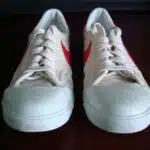
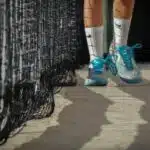

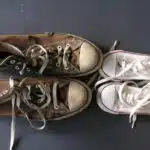
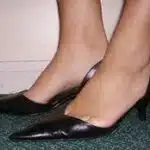
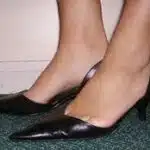



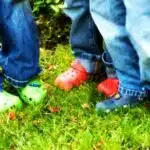

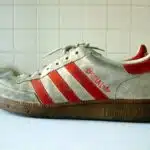


![How To Remove Perfume Odors From Clothes 16 For pungency, strength, durability and delicacy of odor. Read's Grand Duchess Cologne. [back]](https://green-life.blog/wp-content/uploads/2023/05/b-myfoHrx-jq-150x150.jpg.webp)









